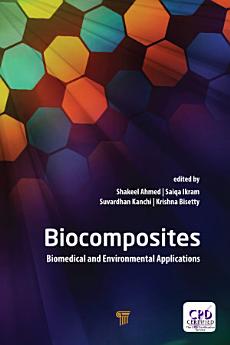Biocomposites: Biomedical and Environmental Applications
Kuhusu kitabu pepe hiki
This book focuses on fiber-based composites applied to biomedical and environmental applications. It presents a comprehensive survey of biocomposites from the existing literature, paying particular attention to various biomedical and environmental applications. The text describes mechanical designs and manufacturing aspects of various fibrous polymer matrix composites and presents examples of the synthesis and development of bionanocomposites and their applications. The book is the first of its kind to present all these topics together unlike most other books on nano-/biocomposites that are generally limited to their fundamentals, different methods of synthesis, and applications.
Kuhusu mwandishi
Shakeel Ahmed is assistant professor in the Department of Chemistry, Government Degree College Mendhar, India. His research focuses on biopolymeric and green nanomaterials, and he has authored several articles on their various applications in the fields of biomedicine, packaging, and water treatment.
Saiqa Ikram is assistant professor in the Department of Chemistry, Jamia Millia Islamia, India. Her area of research is polymers and their modifications for application in water treatment and wound care. She has authored or coauthored a few books and book chapters and more than 50 articles in international peer-reviewed journals.
Suvardhan Kanchi is research scientist at Durban University of Technology, South Africa. His current research involves developing a method to separate organic and inorganic molecules from environmental samples using capillary electrophoresis. He is also interested in the fabrication of electrochemical nano-/biosensors for high-intensity artificial sweeteners, bisphenols, and dyes.
Krishna Bisetty is head of the Department of Chemistry, Durban University of Technology. His research focuses on high-performance computing, ranging from small organic molecules to bioactive macromolecules, including the development of computational models for the design of more effective host–guest systems using state-of-the-art molecular dynamics and docking simulations supported by experimental studies.








